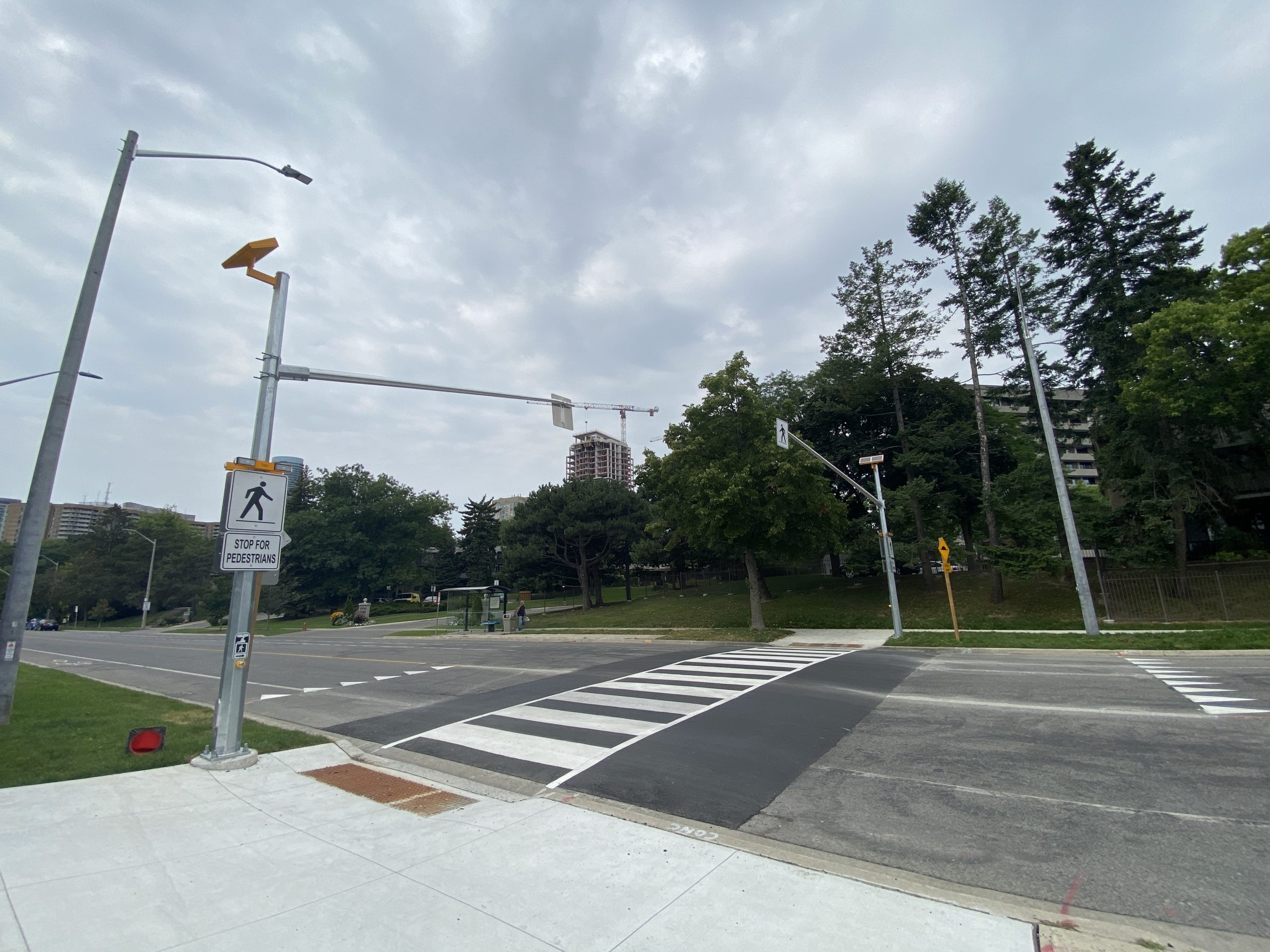Pedestrian crossovers
A pedestrian crossover is a type of crossing where drivers must come to a full stop to allow pedestrians to cross roads safely.
Pedestrian crossovers are located on streets between intersections, at roundabouts, or at right-hand turn lanes with specific signs and pavement markings. They are particularly helpful in areas where pedestrian volumes are high and controlled crossings are not convenient or accessible.
Pedestrian crossovers are implemented throughout the City as part of the City’s Vision Zero Action Plan.

Safety tips at pedestrian crossovers
- If the crossover has lights, push the button to activate the lights so drivers know you want to cross
- Make eye contact with drivers so they see you before you cross
- Make sure all vehicles have stopped before you cross
- Walk your bike across the road
- Slow down and look for pedestrians
- Stop at the painted white triangles
- Wait for all pedestrians to cross the road completely
- Don’t pass other stopped vehicles
Rules and fines at crossovers
Drivers must come to a full stop at crossovers to allow pedestrians to cross safely. If you do not stop completely for pedestrians at a crossover, you can be fined up to $1,000 and issued four demerit points on your driver’s licence. For more information, contact the Ministry of Transportation.
Contact us
If you have any questions about pedestrian crossovers or signals, or want to report a pedestrian signal on a City road that’s not working properly, please call 311 (905-615-4311 outside City limits).
If you have a question or concern about a pedestrian signal on a regional road, please contact the Region of Peel.